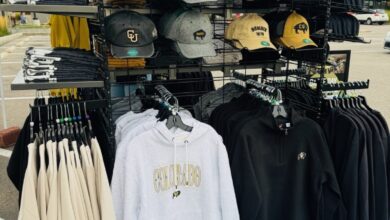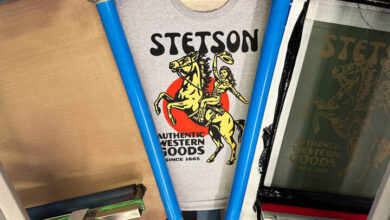Kids’ fashion trends in 2025 combine comfort with gender-neutral designs, eco-friendly fabrics, and mix-and-match versatility, so that kids can engage in everything from school to play.
“Children’s fashion is evolving fast, merging comfort, style, and purpose,” said Amit Gupta, CEO of Monag Apparel, a Rochester, New York-based wholesaler of blank apparel. “The biggest trends right now reflect what today’s parents value — practicality, personality, and planet-friendly choices.”
Minimal designs and muted color palettes are trending in childrenswear in a move toward unisex silhouettes and colors. Traditional blues and pinks are being replaced with earth tones like terracotta, eucalyptus green, oatmeal, clay, and dusty rose. Often, the materials are sustainable with organic cotton and recycled fabrics in high demand, in line with an increase in awareness about how things are made.
“Some of the top-selling infant and toddler styles include fine jersey, short-sleeve bodysuits, and cozy three-end fleece pieces like hoodies and sweatpants,” said Tami Miller, director of creative marketing for LAT Apparel in Ball Ground, Georgia. “Parents love these everyday essentials for their softness, durability, and thoughtful construction. Features like snap closures, tear-away labels, and combed ring-spun fabrics make changes easier and keep kids comfortable all day. These pieces blend function with playful style, making them longtime favorites for growing little ones.”
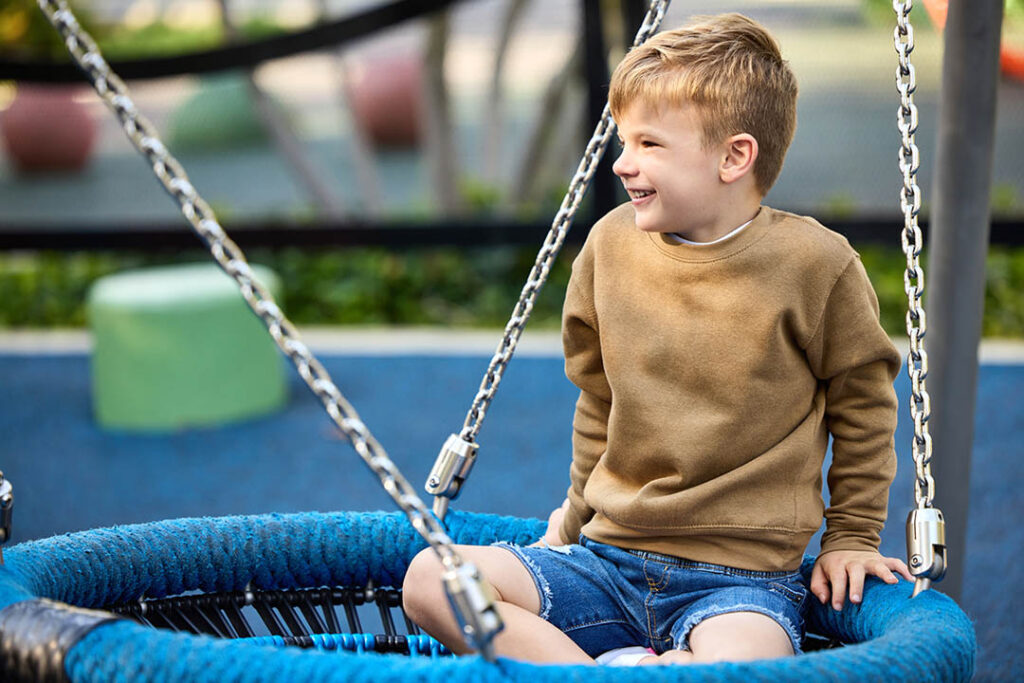
The focus is shifting to comfort with soft fabrics, relaxed fits, and stretchy waists, handy for growing into larger sizes. The choices work for anything from playwear and loungewear to dressier options, allowing function to meet fashion.
“Parents are looking for clothes that are not just cute, but also durable and functional, things their child can wear from playtime to a family gathering without needing a change. The goal: clothes they can move, play, and nap in,” Gupta explained. “Comfort is nonnegotiable, especially for toddlers and active kids.”
Basics are what’s popular in childrenswear, according to Greg Brown, vice-president of business development for Cotton Heritage, a Commerce, California-based wholesaler of apparel blanks.
“Kids are constantly growing, so big brother and big sister can share before the products wear out,” Brown said. “For the most part, simple is better when it comes to childrenswear. You really don’t have a wide offering [like] you have in other adult items. They outgrow the product so quickly.”
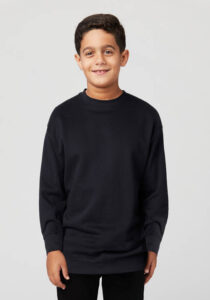
Cotton Heritage sells a line of children’s products that’s similar to what’s available for adults but not in as many colors and styles, such as children’s and youth T-shirts in basic 4.3-ounce and fleece in 7-ounce, all in combed ring-spun cotton.
“Our fleece crewnecks have made a surge because of the crazy world we live in, and hoods are no longer accepted in many schools in large cities,” Brown remarked. “With many schools now, crewnecks have made a bigger impact on some spirit wear and athleticwear that are worn in schools.”
Another trend in children’s fashion is mini-me and matching sets with kids’ clothing mirroring adult fashion, such as “Mommy & Me” and family matching outfits, like jogger sets, jackets, and clean, minimal cuts. The sets are a hit, especially around the holidays and special occasions, because kids love the connection and parents love the photo ops. Also trending is a retro fashion revival with ’90s-inspired denim, stonewashed or vintage-wash T-shirts, sweatshirts, overalls, and color-blocked jackets.
“Above all, the trend is toward thoughtful fashion, pieces that feel good, last long, and reflect both the child’s personality and the parent’s values,” Gupta said.
Decorating childrenswear
Children’s clothes are decorated in several methods that are eco-conscious and durable, balanced with creativity and practicality. The most common decoration methods include screen printing, embroidery, heat transfers, applique and patchwork, and eco-friendly, water-based inks.
Screen printing, for example, is good for bold, vibrant designs and is cost-effective for bulk production. It’s durable, able to withstand frequent washings, retaining the vibrancy of graphics and logos. Another option is embroidery, often used for logos and small icons. It can add texture and a premium look and feel, is highly durable, and doesn’t fade or peel.
There are also heat transfers, including direct to film (DTF) , direct to garment (DTG), heat transfer vinyl (HTV), and sublimation. Heat transfers are ideal for small-batch, on-demand production and custom designs, such as personalized names and messages. They provide precise, detailed images, able to endure a large number of washes.
Applique and patchwork are ways to add fun, interactive design elements to a garment, especially popular in baby and toddler wear.
“It’s visually interesting and often soft to the touch, adding a layer of comfort and style,” Gupta explained.
Eco-friendly, water-based inks are another option, ideal for sensitive skin and environmental consciousness. The result is a softer fabric feel that’s also breathable.
“These decoration methods are chosen not just for visual appeal, but for how well they hold up to the
active lifestyles of children,” Gupta said. “Parents value both the style and the function, and these techniques deliver both.”
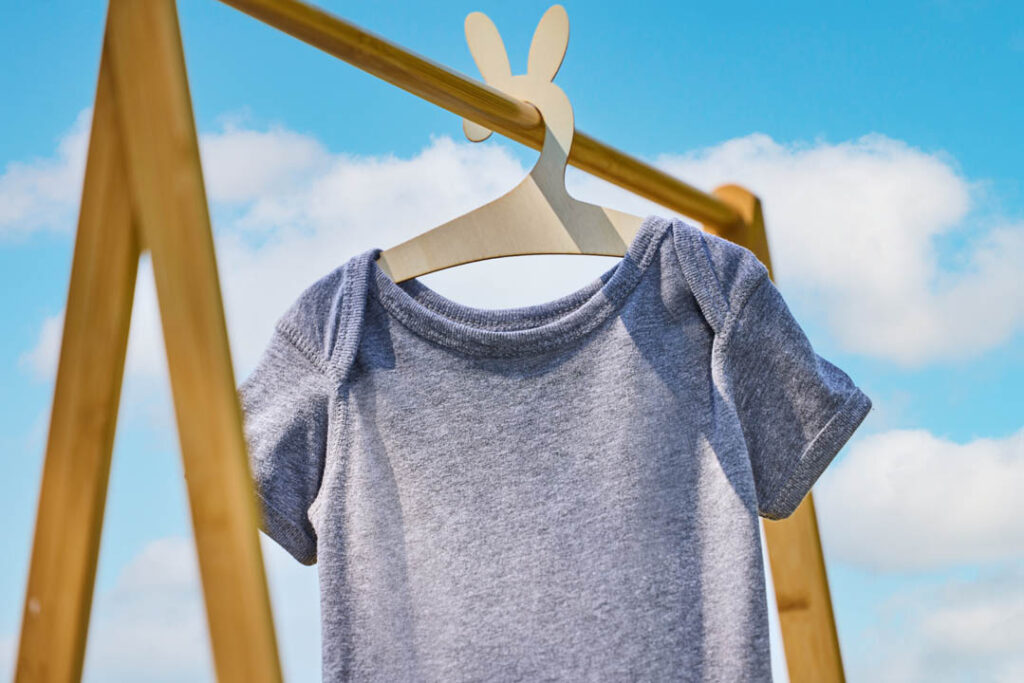
Materials
The garment materials used in childrenswear vary according to the different decoration methods. For screen printing, the most common include 100% cotton, cotton blends like cotton and polyester, and jersey knits. The items are decorated with plastisol ink for durability, water-based ink for a softer feel, and discharge ink for soft prints on dark fabrics.
“Cotton and blends absorb ink well, and these inks bond to the fibers for a vibrant, lasting print,” Gupta said.
Materials typically used with embroidery are thick, such as fleece, cotton, denim, canvas, and twill. Decorating is done with embroidery thread like polyester or rayon, selected for durability, colorfastness, and sheen, and a backing material that serves as a stabilizer to support the stitching and prevent puckering.
Heat transfers are typically done on cotton, polyester, blends, and performance fabrics. HTV is used for cut designs, DTF for full-color images, and transfer paper for sublimation or inkjet transfers.
“These materials adhere best to smooth fabrics. HTV and DTF give flexibility for customization and detail,” Gupta said.
The materials for applique and patchwork include fleece, denim, and heavy cotton, and they’re decorated with felt, cotton, and fleece fabric patches with a stitching or adhesive backing.
“The garment should be stable enough to hold added fabric pieces,” Gupta said. “Applique adds texture, color, and fun, especially in kidswear.”
For eco-friendly, water-based inks, the primary materials are 100% cotton and organic cotton, and they’re decorated with water-based inks that are pigment or discharge types.
“These inks soak into natural fibers, making the print part of the fabric rather than sitting on top. They’re nontoxic, breathable, and safer for sensitive skin,” Gupta said.
Safety standards
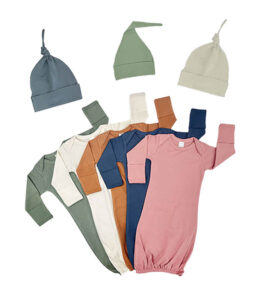
When making decisions about materials and decoration, children’s clothing also has to meet strict safety standards to protect against skin irritation, injury, choking, and suffocation. The items can’t have any small, detachable parts that infants and toddlers may pull off and swallow, and sleepwear needs to be flame-resistant and snug-fitting to reduce burn risk.
Any hardware on a garment needs to be nickel-free or hypoallergenic to avoid sensitive skin issues and
allergic reactions. Cords and drawstrings are restricted to avoid loose materials being caught on playground equipment or doors. And the inks and dyes need to be nontoxic, since kids’ skin can be sensitive, and, especially if they are younger, they
may chew on their clothing.
“Children’s clothing safety isn’t just a legal requirement; it builds trust with parents and protects the brand from liability and recalls,” Gupta concluded. “Following safety guidelines shows that you prioritize both style and well-being.”


